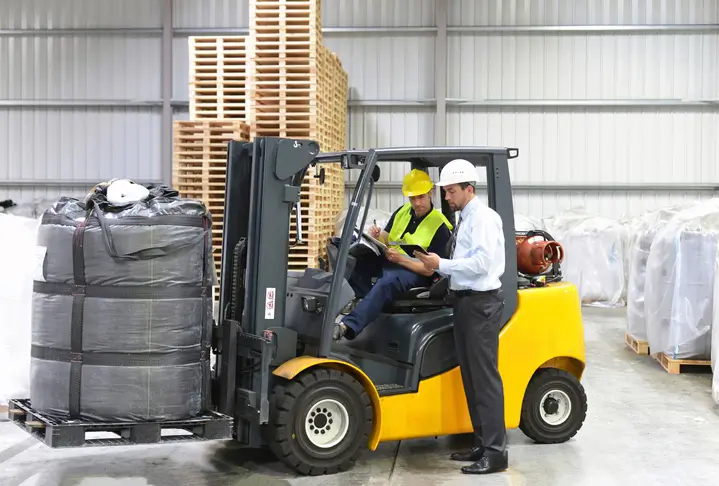Most Important Statistics Of OSHA 10-Hour Construction To Know
5,000 Workers
In the United States, over 5,000 workers lose their lives while performing their jobs each year in the construction sector. A constrained budget is the main problem of the construction sector, which hinders them from investing in technology, marketing campaigns, and business growth. Financial barriers also affect their workforce as they cannot offer a safe workplace.
Generally, these businesses have just hired novices who are still in their first year of employment, and they are the ones who, due to lack of training and experience, are more at risk of getting injured at the workplace.
48%
The number of injury claims from these beginners is concerning, especially in the construction industry, where about half of the claims originated from these workers during their first years. Also, the beginners in the construction industry constitute 48% of the bill claimed in this case.
Such figures demonstrate that these construction sectors are subject to the pressure of spending on injury-related expenses as they are the ones that are mostly affected by this. In addition, they also present the situation where one in every five small businesses ends in the first year.
Big organizations can be in a position to cover the financial toll that workplace accidents bring. However, small construction firms may end up where such losses lead to the company’s closure.
It is important to establish a safe working environment that gives all the workers, both those in small firms and those in big firms, equal access to protection. Nevertheless, the question remains on the most efficient way to achieve the same goal, particularly for startups.
This article discusses practical methods to enhance workplace safety for owners of small businesses, which incorporates tips from the OSHA 10-Hour Construction Training that is required for employees’ safety training and skills development.
Statistics about the Construction Industry’s Fatalities
All construction activities are very risky, and this results in a rise in the number of people who lose their lives as well as suffer injuries. This is dangerous since it involves heavy machinery, physical work, and sometimes working above the ground.
Fatal Jobs
Second Only to Truck Drivers
The workers in the construction sector are in second place because they are just one step behind the truck drivers, who have the most fatal jobs in the workplace.
11%
Rise In The Number Of Fatalities
The report’s data indicates that there was an increase in the number of deaths occurring on construction sites by 11% in 2022 compared to the previous year.
20%
One Out Of Every Five Deaths
About 20% of workplace fatalities result from construction in America.
150%
Implications for Hispanic or Latino Foreign-born Workers:
Over one hundred and fifty percent (150%) of those who died were migrant Hispanic workers from Mexico.
2022
Fatalities During the Year 2022
In 2022, one thousand and fifty-six employees who worked in construction lost their lives through work-related accidents.
1%
Fatal Injury Rate at its Peak
As statistics indicate, construction has a 1% yearly fatality rate, which is the highest risk among all the occupations in the world.
Enhancing Workplace Safety: OSHA’s Contributions and Consequences over the Decades

As we know, the Occupational Safety and Health Administration (OSHA) has played a critical role in the safety of work environments for decades.
130 million
130 million workers are under the supervision of OSHA
8 million
8 million workplaces fall under OSHA’s oversight
70,000 workers
70,000 workers are overseen by one OSHA inspector
10 regional
10 regional and 85 local offices of OSHA are in the United States
$612 million
$612 million was the budget of OSHA in 2022
$632 million
$632 million was OSHA’s budget in 2023
34,267 total
34,267 total federal evaluations were conducted in 2023
3.7 per 100,000
3.7 per 100,000 employees was the fatality rate in 2022
Top Violations Indicating Focus Areas
The fact is made clearer by giving examples of violations of the exact nature that have happened more than once. The violations concerning the fall protections in construction hazard communication and respiratory protection are addressed first, which shed light on the areas of high priority.
OSHA’s Impact on Workplace Safety

Identifying Hazards
The participants will learn to sense the dangers that are particular to their specific industry. They will be more vigilant and prepared because of this.

Preventing and Controlling Hazards
The course takes the employees through the competencies of how to identify hazardous situations and prevent them from escalating by taking effective actions.
Foundations of Hazard Management
The attendees will be provided with effective ways and tools to prevent damaging occurrences. Hence, a safety culture in which everybody is actively interested is established.
Understanding Worker Rights
Employees have to have resources to know their entitlements, for instance, their right to a safe and healthy workplace, their understanding of hazards, and the process of reporting safety concerns.
OSHA 10-Hour Construction Course- Key Points

1970
Significant Reduction in Worker Deaths:
Astonishingly, since its inception, worker fatalities have witnessed a deteriorating trend. It has been estimated that the average figure was 38 deaths per day in 1970, and it is now 15 in 2022.
2022
Lower Injury and Illness Rates
Another major success is the noticeable decline in the rate of injuries and illnesses, which plummeted from 10.9 per 100 workers in 1972 to 2.7 in 2022 only.

This is one of the ways through which OSHA is proving to be a strong advocate for safety protocols. It also shows that the safety improvement process is still ongoing. Thus, there is a need for continuous attention, education, and compliance with safety standards to keep safety improvement progressing and make it even better in all industries.
Program Duration and Certification
The training program is designed as a 10-hour one, and it can be divided into several time intervals or be done all at once, with the preference of the option chosen by the provider. If one completes the training courses, then s/he is issued the OSHA 10-Hour Training Program Completion Card. It indicates that they have a good knowledge of workplace safety and health matters, and thereby, their opportunities in the job market are improved in fields where strict adherence to safety policies is the norm.
Learning about Employer Responsibilities
The Program has highlighted the duties and responsibilities that the employer has in maintaining the safety and health of their workers.


Filing Complaints with OSHA
Workers are coached on how they can file complaints to OSHA if they find that the workplace is violating safety standards.
Conclusion
Over the years, OSHA has worked hard to help organizations achieve a safe and sound workplace, especially for the construction industry. The statistics above show how vulnerable workers working at construction sites are.
Therefore, employers must train their employees with OSHA 10-Hour Construction courses. These courses will not only prove beneficial for the lives of employees but also bring revenue and profits to your company.







